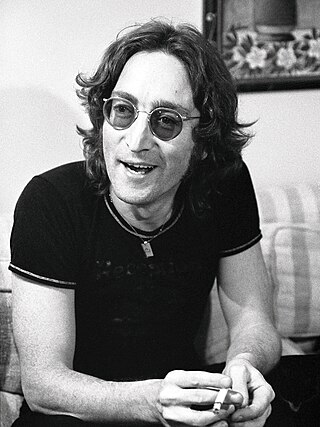
John Winston Ono Lennon was an English singer, songwriter and musician. He gained worldwide fame as the founder, co-songwriter, co-lead vocalist and rhythm guitarist of the Beatles. His work included music, writing, drawings and film. His songwriting partnership with Paul McCartney remains the most successful in history.
The Beatles Anthology is a multimedia retrospective project consisting of a television documentary, a three-volume set of double albums, and a book describing the history of the Beatles. Beatles members Paul McCartney, George Harrison and Ringo Starr participated in the making of the works, which are sometimes referred to collectively as the Anthology project, while John Lennon appears in archival interviews.

Klaus Otto Wilhelm Voormann is a German artist, musician, and record producer.
Apple Records is a British record label founded by the Beatles in 1968 as a division of Apple Corps Ltd. It was initially intended as a creative outlet for the Beatles, both as a group and individually, plus a selection of other artists including Mary Hopkin, James Taylor, Badfinger and Billy Preston. In practice, the roster had become dominated by the mid-1970s with releases of the former Beatles as solo artists. Allen Klein managed the label from 1969 to 1973, then it was managed by Neil Aspinall on behalf of the Beatles and their heirs. Aspinall retired in 2007 and was replaced by Jeff Jones.
"How Do You Sleep?" is a song by English rock musician John Lennon from his 1971 album Imagine.

The Plastic Ono Band were a rock band formed by John Lennon and Yoko Ono in 1969 for their collaborative and solo projects based on their 1968 Fluxus conceptual art project of the same name.
"I've Got a Feeling" is a song by the English rock band the Beatles from their 1970 album Let It Be. It was recorded on 30 January 1969 during the Beatles' rooftop concert. It is a combination of two unfinished songs: Paul McCartney's "I've Got a Feeling" and John Lennon's "Everybody Had a Hard Year". The song features Billy Preston on electric piano.

"Real Love" is a song written by the English musician John Lennon, formerly of the Beatles. He recorded six demos of the song in 1979 and 1980 with "Real Life", a different song that merged with "Real Love". In 1988, the sixth take was posthumously released for the documentary soundtrack Imagine: John Lennon. In 1995, his demo was completed by his former Beatles bandmates as part of the Beatles Anthology project, along with "Free as a Bird".
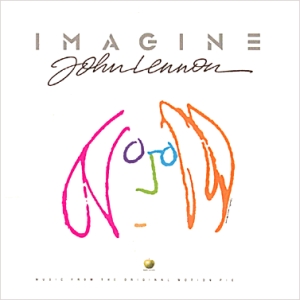
Imagine: John Lennon is a soundtrack album of popular music compiled for the 1988 documentary film Imagine: John Lennon from songs written or co-written by John Lennon. Originally released that year as a double album, it now remains available on one CD.

"The Ballad of John and Yoko" is a song by the English rock band the Beatles that was released as a non-album single in May 1969. It was written by John Lennon and credited to the Lennon–McCartney partnership, and chronicles the events surrounding the wedding of Lennon and Yoko Ono. The song was the Beatles' 17th UK number-one single and their last for 54 years until "Now and Then" in 2023. In the United States, it was banned by some radio stations due to the lyrics' reference to Christ and crucifixion. The single peaked at number 8 on the US Billboard Hot 100. The song has subsequently appeared on compilation albums such as Hey Jude, 1967–1970, Past Masters, and 1.

"I'm So Tired" is a song by the English rock band the Beatles from their 1968 double album The Beatles. It was written and sung by John Lennon, though credited to Lennon–McCartney. Lennon wrote the song during the Beatles' stay in India about insomnia he was having due to constant meditation and because he missed Yoko Ono. The song was recorded in the same session as another White Album song, "The Continuing Story of Bungalow Bill".

"Sexy Sadie" is a song by the English rock group the Beatles from their 1968 double album The Beatles. The song was written by John Lennon in India and credited to Lennon–McCartney. Lennon wrote the song during the Beatles' stay in India in response to the Maharishi Mahesh Yogi's alleged sexual advance on actress Mia Farrow. The song has been considered an early example of a diss track.
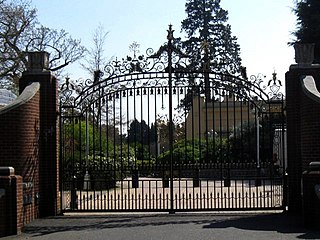
Tittenhurst Park is a Grade II listed early Georgian country house in Sunningdale near Ascot, Berkshire. It was famously the home of musicians John Lennon and Yoko Ono from 1969 until 1971, and then the home of Ringo Starr and family from 1973 until 1988. Starr sold the property to Sheikh Zayed bin Sultan Al Nahyan, the President of the United Arab Emirates, in 1989.

Let It Be is a 1970 British documentary film starring the Beatles and directed by Michael Lindsay-Hogg. The film documents the group's rehearsing and recording songs in January 1969 for what was to become their twelfth and final studio album Let It Be. The film includes an unannounced rooftop concert by the group, the last public performance of the four together.
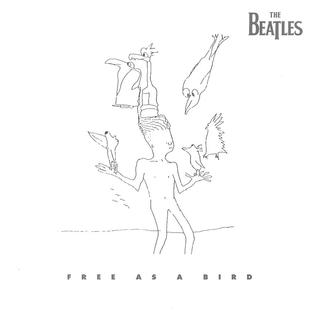
"Free as a Bird" is a single released in December 1995 by English rock band the Beatles. The song was originally written and recorded in 1977 as a home demo by John Lennon. In 1995, 25 years after their break-up and 15 years after Lennon's murder, his then surviving bandmates Paul McCartney, George Harrison and Ringo Starr released a studio version incorporating the demo.
"Grow Old with Me" is one of the final songs written by John Lennon. It was first recorded by Lennon as a demo while in Bermuda. A handwritten lyric sheet for the song is dated July 5, 1980 Fairyland Bermuda. The song was first released on the posthumous album Milk and Honey in 1984. It was also rumored to be among the songs planned as a possible reunion single by his former bandmates during the making of The Beatles Anthology.
The Beatles Anthology is a documentary television series on the career of the Beatles. It was broadcast on UK television in six parts on ITV between 26 November and 31 December 1995, while in the United States it was seen as three feature-length episodes on ABC between 19 and 23 November 1995. It was released in greatly expanded form as an eight-volume VHS set and an eight-disc LaserDisc set on 5 September 1996. The series was re-released on DVD in 2003, with an 81-minute special-features disc.
The Beatles were originally a quartet, but only Paul McCartney and Ringo Starr remain.
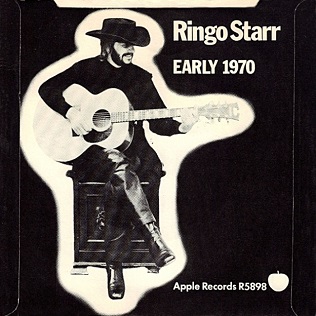
"Early 1970" is a song by English rock musician Ringo Starr that was released as the B-side of his April 1971 single "It Don't Come Easy". A rare example of Starr's songwriting at the time, it was inspired by the break-up of the Beatles and documents his relationship with his three former bandmates. The lyrics to the verses comment in turn on Paul McCartney, John Lennon and George Harrison as individuals, and the likelihood of each of them making music with Starr again. In the final verse, Starr offers a self-deprecating picture of his musical abilities and expresses the hope that all four will play together in the future. Commentators have variously described "Early 1970" as "a rough draft of a peace treaty" and "a disarming open letter" from Starr to Lennon, McCartney and Harrison.

The Beatles: Get Back is a documentary television series directed and produced by Peter Jackson. It covers the making of the Beatles' 1970 album Let It Be and draws largely from unused footage and audio material originally captured for and recycled original footage from the 1970 documentary of the album by Michael Lindsay-Hogg. The docuseries has a total runtime of nearly eight hours, consisting of three episodes, each of duration between two and three hours covering about one week each, together covering 21 days of studio time.













